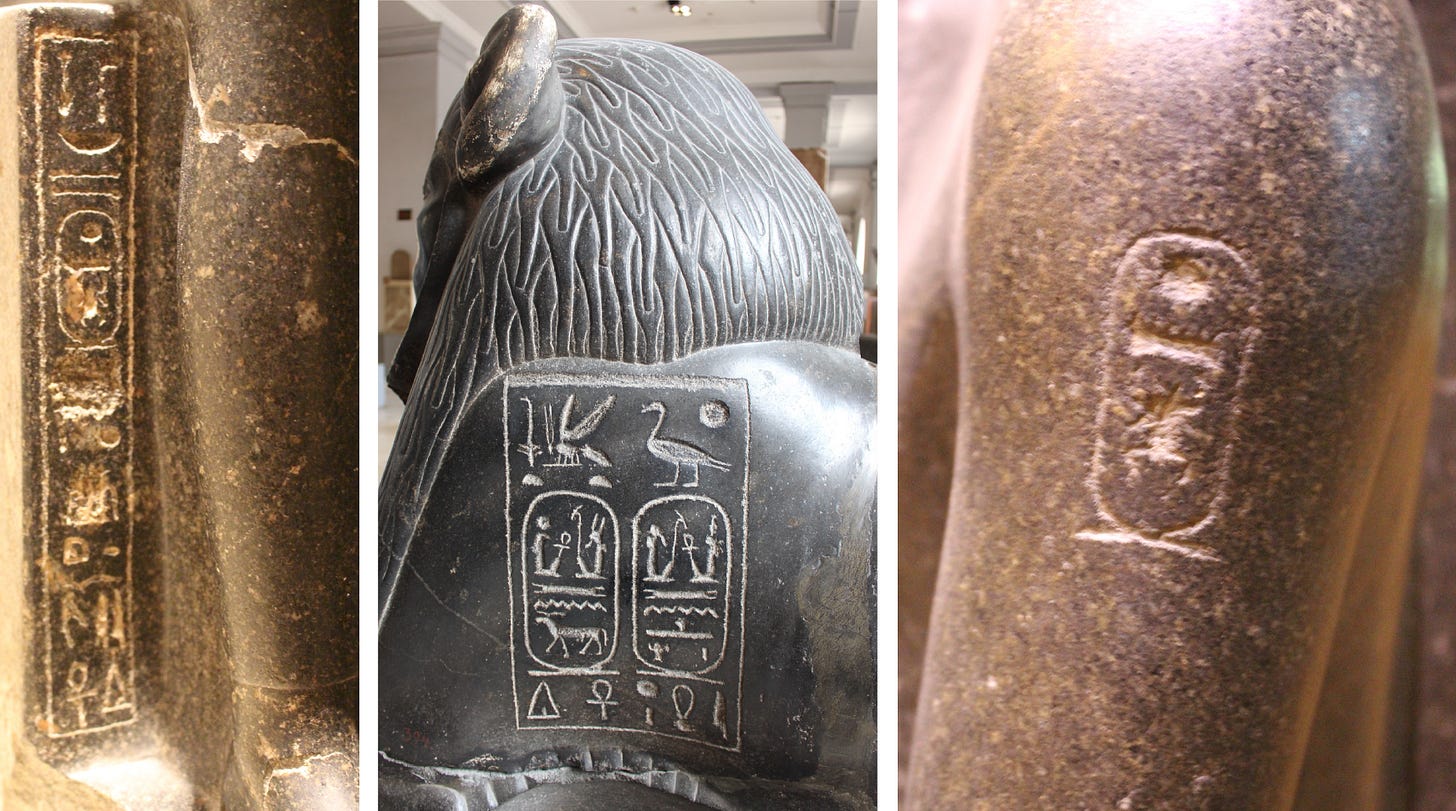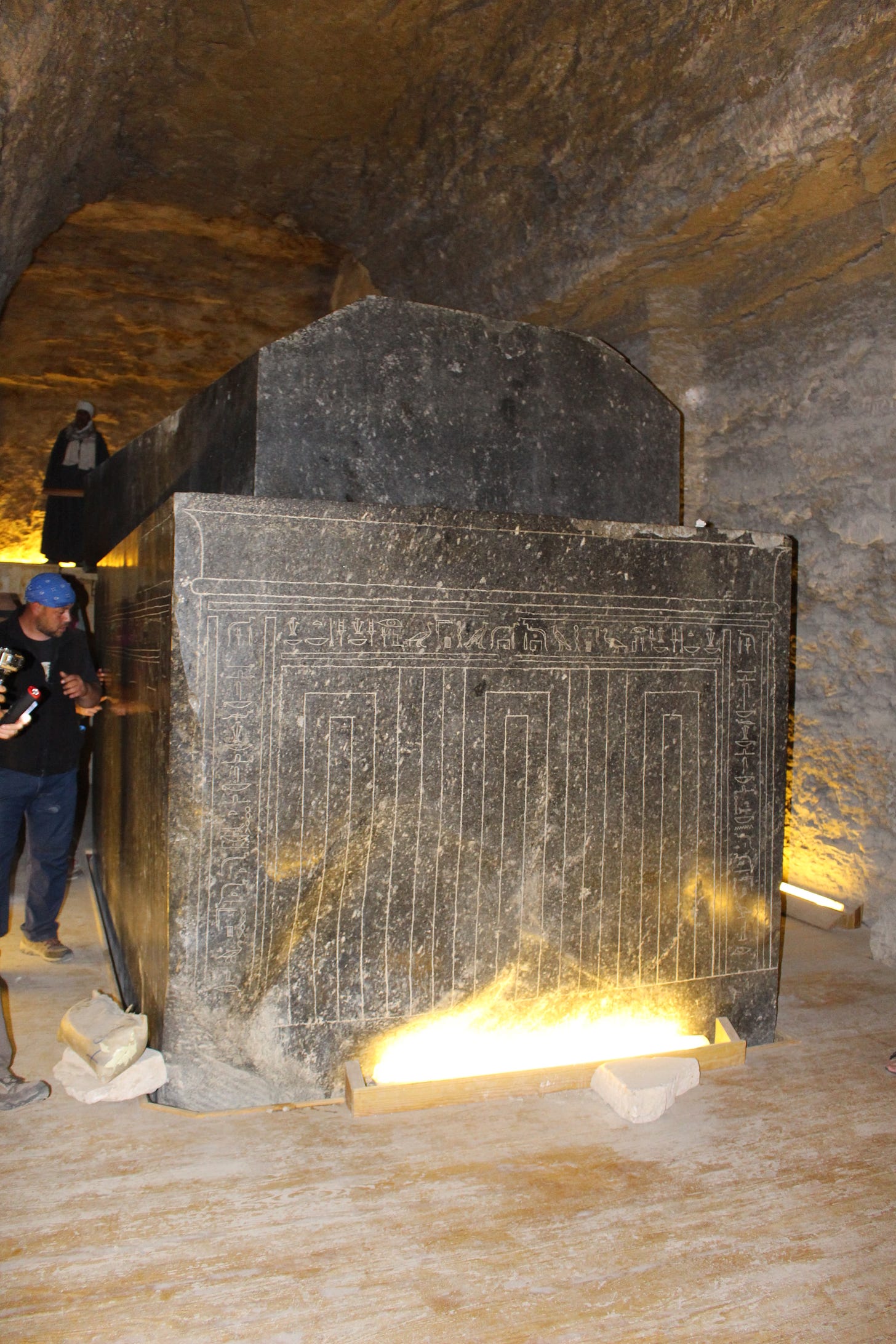I was recently involved in another online exchange with an armchair historian regarding the Serapeum at Saqqara in Egypt. In the comments section of a video I had mentioned that the hieroglyphs on the box in niche 17 had been 'scratched in' long after the box had been manufactured, only to be told I was wrong and that these engravings were created at the same time by 'skilled artisans'. The armchair historian helpfully provided me with a step-by-step guide on how hieroglyphs were created and was also kind enough to recommend a documentary on the subject. The exchange with this clueless pillock highlighted the difference between reading books or watching documentaries about archaeology and actually getting on a plane and visiting these places. As I've said numerous times since travelling to many of these ancient sites, it all changes when you get there - and like so many other things the subject of 'glyphiti' obviously hadn't come up in any of this armchair historian's research.
Take a look at the video above from the Serapeum with Yousef Awyan. The engravings on the box in niche 17 are appalling quality. The lines aren't straight or parallel, the hieroglyphs are just outlines (not debossed) and the chisel strokes are rough and uneven. Overall these engravings look more like the efforts of a drunken nine-year-old with a hammer and a blunt nail than the work of 'skilled artisans'. And this isn't the only example. There are many, many more and as explained to the armchair historian, the Egyptian museums are full of very well-manufactured artefacts (accurately proportioned, good symmetry with a smooth surface finish) which for some reason have had very poor quality hieroglyphs carved into them.
Cultural appropriation is cited as the most likely explanation. The original artefact would go through several 'owners' during its long lifetime and each one would make it 'theirs' by modifying it - usually by scrubbing out the name of the previous owner and replacing it with theirs. You can see more examples on the statues in the header image for this article and in some cases the wall reliefs on Egyptian temples were intentionally carved very deeply to prevent exactly this process occurring (the Scientists Against Myths YouTube channel also produced a detailed video on this subject).
What's seen on these artefacts also fits the theory of a cyclical catastrophic event which has been mentioned in another article. In the aftermath the survivors may have simply moved into the now deserted areas and redecorated, or picked up and carried home whatever they found and carved in their signatures. I have no issue with either of these explanations, but as an engineer my question about the glyphiti on these artefacts has always been regarding its dreadful quality. Why couldn't they have done a better job? If a job's worth doing, it's worth doing well as the saying goes but in most of these examples, it definitely wasn't done well. Whoever scratched in the glyphiti on the box in niche 17 didn't just do it in a fit of misguided creativity, like a bunch of kids who had nothing better to do. The worker(s) also didn't finish only one face, realise that it looked awful and then aborted the rest of the job. It was done to all four faces of the box, some of which measure approx. 7' X 12' and even though it's very poor quality work, this would have still required time, effort and planning. Firstly they would have been working in the dark. The Serapeum is an underground network of tunnels, so some form of lighting would have been needed. Secondly whoever did it brought a toolbox with them. We know this because a shallow groove cut on one of the faces has been interrupted by a deeper groove, indicating that a heavier chisel was needed to get through a harder section of the stone.
Why was this done to these artefacts in the first place? Why go to all this time and trouble only to create such shoddy workmanship? If it really was just cultural appropriation, who were they trying to fool with these abysmal efforts? Can you seriously imagine that the new Pharaoh/ruler or whoever commissioned this work would have been happy with these results?
Unlike the armchair historian, if you've been to Egypt you'll know that in archaeological terms it's a patchwork quilt. Some of the artefacts are untouched originals but there are also modifications, repairs and even fakes. It's a confusing picture that’s only compounded by Egyptologists whose beliefs are based upon interpreting the meaning of hieroglyphs, rather than looking at their manufacturing quality. Unfortunately, as Yousef admits regarding the engravings on the box in niche 17, 'That's what we use in Egyptology to date and relate and identify this artefact.'







Interesting article as usual buddie.